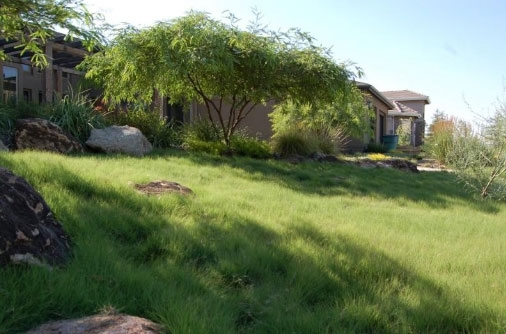Green going out of fashion in California
Many Californians are beginning to reluctantly accept that a well-manicured, lush green lawn is no longer a realistic landscape feature in the arid West, reported Steven Kurutz in the New York Times.
Chuck Ingels, UC Cooperative Extension advisor in Sacramento County, told the reporter homeowners with traditional green lawns may soon have no choice but to let them go brown. An average of 50 to 60 percent of a household's water consumption goes to outdoor use, which includes the landscape. He envisions a future in which lawns go dormant in winter and in summer, if watering is not allowed.
“The water bills are going up,” Ingels said. “I think we're going to start seeing more and more people opt for a brown lawn. I think it could become more traditional.”
If some water is available, there are less thirsty alternatives to traditional lawns that can provide a similar effect. Ingels has experimented with meadow-like buffalograss and dune sedge as alternatives. For example, UC Verde buffalograss, released in 2003, was bred for the California climate by UC researchers. It needs only infrequent mowing, uses half the water of tall fescue and is disease and pest resistant.
Other options are drought-tolerant native species like carex and bentgrass. These can be used for the meadow effect if not mowed, or mowed regularly for a more traditional look.


